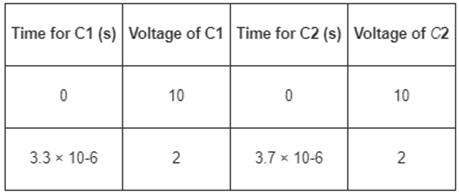Question
Essentially all manufactured items are made to some 'tolerance, or how close the actual product is to the nominal specifications. For example, if a company
Essentially all manufactured items are made to some 'tolerance," or how close the actual product is to the nominal specifications. For example, if a company manufactures hammers, one customer might specify that the hammers should weigh 16 ounces. With rounding, this means that the actual weight of each hammer meets the specification if it weighs between 15.5 and 16.5 ounces. Such a hammer might cost 10 dollars. However, if the U.S. military, in its quest for perfection, specifies that an essentially identical hammer should have a weight of 16.000 ounces, then in order to meet specifications, the hammer must weigh between 15.9995 and 16.0005 ounces. In other words, the weight must fall within a range of one thousandth of an ounce. Such a hammer might cost $1,000.
You have purchased a "grab bag" of 100 supposedly identical capacitors. You got a really good price, but there are no markings on the capacitors. All you know is that they are all the same nominal value. You wish to discover not only the nominal value, but the tolerance: are they within 5% of the nominal value, or within 20%? You set up a simple circuit with a known resistor and each of the unknown capacitors. You charge each capacitor to 10 volts, and then use an oscilloscope to time how long it takes for each capacitor to discharge to 2 volts. In a simple RC (resistor?capacitor) circuit, the voltage (VC) across a capacitor (C) discharging through a resistor (R) is given by:
VC = V0 e - tl(RC)
Where t is time in seconds and V 0 is the initial voltage across the capacitor.
After measuring the time for each capacitor to discharge to from 10 to 2 V. you scan the list of times, and find the fastest and slowest Since the resistor is the same in all cases, the fastest time corresponds to the smallest capacitor in the lot, and the slowest time to the largest. The fastest time was 3.3 microseconds and the slowest was 3.7 microseconds. For the two capacitors, you have the two pairs of data points.
(a) Enter these points into a worksheet, then plot these points in Excel, the pair for Cl and the pair for C2, on the same graph, using time as the independent variable. Fit exponential trendines to the data.

(b) Assuming you chose a precision resistor for these measurements that had a value of R = 1,000.0 ohms, determine the capacitance of the largest and smallest capacitors
(c) You selected the fastest and slowest discharge times from a set of 100 samples Since you had a fairly large sample set, it is not a bad assumption, according to the Laws of Large Numbers, that these two selected data sets represent capacitors near the lower and higher end of the range of values within the tolerance of the devices Assuming the nominal value is the average of the minimum and maximum allowable values, what is the nominal value of the set of capacitors?
(d) What is the tolerance, in percent, of these devices/ As an example, if a nominal 1?F (microfarad) capacitor had an allowable range of 0.96 ?F
If standard tolerances of capacitors are 5%, 10%, and 20%, to which of the standard tolerances do you think these capacitors were manufactured? If you pick a smaller tolerance than you calculated, justify your selection. If you picked a higher tolerance, explain why the tolerance is so much larger than the measured value.
Time for C1 (s) Voltage of C1 Time for C2 (s) Voltage of C2 0 3.3 x 10-6 10 2 0 3.7 x 10-6 10 2
Step by Step Solution
3.39 Rating (152 Votes )
There are 3 Steps involved in it
Step: 1
a Use the equation for modeling the voltage across the capacitor V C discharging through the resisto...
Get Instant Access to Expert-Tailored Solutions
See step-by-step solutions with expert insights and AI powered tools for academic success
Step: 2

Step: 3

Ace Your Homework with AI
Get the answers you need in no time with our AI-driven, step-by-step assistance
Get Started


